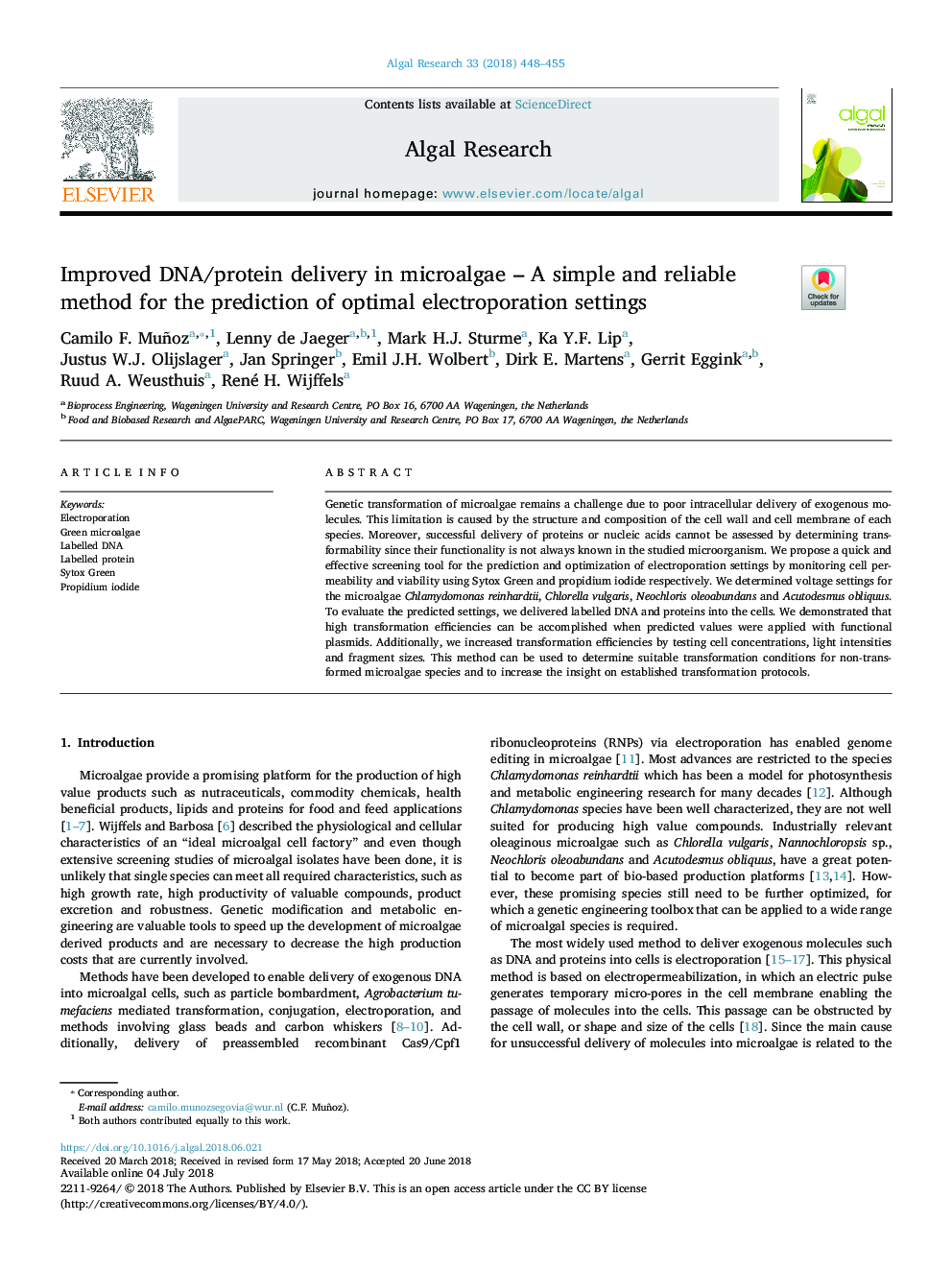| Article ID | Journal | Published Year | Pages | File Type |
|---|---|---|---|---|
| 8085677 | Algal Research | 2018 | 8 Pages |
Abstract
Genetic transformation of microalgae remains a challenge due to poor intracellular delivery of exogenous molecules. This limitation is caused by the structure and composition of the cell wall and cell membrane of each species. Moreover, successful delivery of proteins or nucleic acids cannot be assessed by determining transformability since their functionality is not always known in the studied microorganism. We propose a quick and effective screening tool for the prediction and optimization of electroporation settings by monitoring cell permeability and viability using Sytox Green and propidium iodide respectively. We determined voltage settings for the microalgae Chlamydomonas reinhardtii, Chlorella vulgaris, Neochloris oleoabundans and Acutodesmus obliquus. To evaluate the predicted settings, we delivered labelled DNA and proteins into the cells. We demonstrated that high transformation efficiencies can be accomplished when predicted values were applied with functional plasmids. Additionally, we increased transformation efficiencies by testing cell concentrations, light intensities and fragment sizes. This method can be used to determine suitable transformation conditions for non-transformed microalgae species and to increase the insight on established transformation protocols.
Related Topics
Physical Sciences and Engineering
Energy
Renewable Energy, Sustainability and the Environment
Authors
Camilo F. Muñoz, Lenny de Jaeger, Mark H.J. Sturme, Ka Y.F. Lip, Justus W.J. Olijslager, Jan Springer, Emil J.H. Wolbert, Dirk E. Martens, Gerrit Eggink, Ruud A. Weusthuis, René H. Wijffels,
